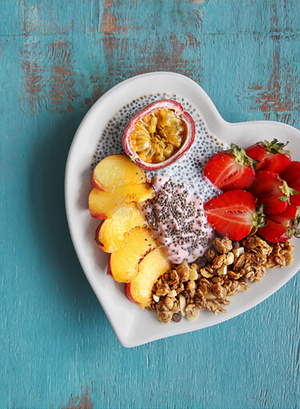- My Ramadan
- Recipes
- Nutrition And Health
-
Brands
- Aero
- COFFEE-MATE®
- CRUNCH® CEREALS
- Cocoa Puffs®
- Fitness Toasties
- illuma 3
- KLIM®
- MAGGI®
- NAN® 3
- NESCAFÉ®
- NESQUIK®
- Nestle® CERELAC®
- Nestle® Pure Life®
- NIDO® PLUS
- PROGRESS KIDS GOLD
- SMARTIES®
- COUNTRY CORN FLAKES®
- CHOCAPIC®
- COOKIE CRISP®
- HONEY CHEERIOS®
- KITKAT®
- LION® CEREAL
- NESCAFÉ® Dolce Gusto®
- NESQUIK® CEREALS
- Nestle® FITNESS®
- NESTLÉ® DESSERT SOLUTIONS
- NIDO® FORTIFIED
- PROMISE PE GOLD
- Perrier®
The healthy way to handle meat
Succulent kebabs, juicy kebbeh, spicy mutton… for most of us meat is one of the main ingredients in our dishes! Whether it is grilled, roasted, boiled or part of the stews, we usually consume meats twice a week or even more sometimes. Not only does it add taste and substance to our food, but is also an important source of iron and proteins, which are essential nutrients for our bodies.
Being a kind of food that spoils easily, we have to be aware of the proper methods of buying, handling, and cooking meat safely. That is why it is important to remember that safety starts at the source.
Safety when shopping
When buying meat, we often use terms like “lean”, “low-fat”, “fresh”, “tender” and other expressions to describe the quality and type of meat we want. But the most obvious thing you notice is the colour, because we believe that it indicates the freshness of the meat – red, pink, brown, light brown and even grey! But does colour really affect the quality of the meat? The answer is no: if stored safely in a supermarket fridge, it does not affect the quality!
The optimum surface colour of fresh meat (i.e., cherry-red for beef; dark cherry-red for lamb; and pale pink for veal) is highly unstable and short-lived. That is because its exposure to store lighting as well as the contact with air makes the meat turn to brownish-red. This change is normal for fresh a product and does not mean that it is spoiled.
Keep in mind that you should always pick up meat last when shopping at a grocery store – to minimise the time between buying the meat and storing it at your home or cooking it.
The best way to handle meat and store it
Now that you’ve bought your meat, what do you do to maintain its quality and taste? You have two choices: you can directly cook it, or keep it in its original wrapping and store it the refrigerator for a maximum of 3 days before cooking.
You can also store it in the freezer and keep it for later use. This is because frozen meat can stay in good quality for 6-12 months!
For proper freezing:
- Use freezer-type wrapping. You can wrap the original package with airtight heavy-duty foil, plastic wrap or a freezer bag, especially if you plan to store the meat for longer than 2 months.
- Remove as much air as possible from the package and close it firmly to preserve the colour of the meat.
- Label the package with the type of meat and packaging date
If you notice some white dried patches on frozen meat, don’t worry, it is just freezer burn. To explain: when the meat has been frozen for an extended period of time or hasn’t been wrapped or sealed properly, this will occur. The product remains safe to eat, but the areas with freezer burn will be dried out and tasteless and can be trimmed away if desired.
Important note: If you notice that the meat has a bad odour, is sticky to the touch and darkens in colour, then it is probably spoiled and should be discarded.
Now, how do you defrost it properly?
- Defrost the meat you need a night ahead by putting it in the fridge (don’t defrost on the kitchen counter)
- For quick thawing, either use the microwave or put the packed meat in cold water and change it every 30 minutes
And most importantly, how do you cook it?
The meat should be cooked to an interior temperature of about 77° C. At this temperature, you’ll notice that its colour changes to a brown-grey shade. On the other hand, sometimes ground beef can still be pink inside after it is safely cooked. The pink colour can be due to a reaction between the oven heat and the pigment, which causes a red or pink colour. It can also occur when vegetables containing nitrites such as spinach and celery are cooked along with the meat. Because well done meat and safety cannot be judged by colour, it is beneficial to use a food thermometer when cooking meat.
Always remember, that after you cook it, you can preserve your meat dish in the fridge for 3-4 days, for good quality, safety and taste.
When consuming meat, remember lean meat is especially nutritious and tasty, and proper handling and cooking is very important to maintain its quality and safety. But most importantly remember, raw meat is dangerous to eat due to potential microbial growth. Cooking it well is always a safe choice and a tasty one as well, because you can enjoy the benefits of spice, flavour and taste.




